Rabbit farming is the fastest-growing industry in the Philippines today. Rabbit farming is a lucrative business in the Philippines, and it’s quickly growing in popularity. The Philippines has a warm climate that is perfect for raising rabbits. It requires little land, low inputs, and generates high yields.
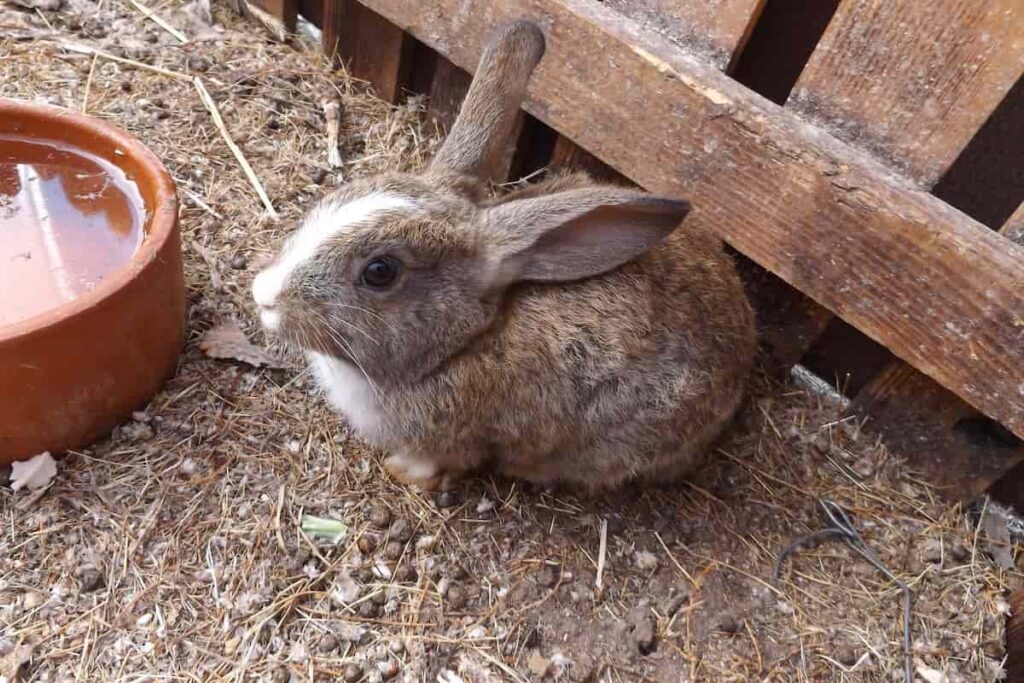
How to start Rabbit farming in the Philippine
Rabbit farming business plan Philippines
- A rabbit farming business plan in the Philippines can be started with a few rudimentary steps. Firstly, it is important to consult with local agricultural specialists and form an alliance with rabbit farmers in neighboring provinces and other interested parties, such as feed suppliers, veterinarians, and breeder partners. Rabbits are omnivores, and as such, they require a varied diet to maintain their health and productivity. Therefore, rabbit farmers in the Philippines feed their rabbits with various crops, hay, and other inputs. This ensures that the rabbits have all the nutrients they need to thrive.
- The most common type of setup for small-scale rabbit farming is hutch-type housing divided into multiple compartments, each housing two or three rabbits. The farmer should provide food, water, and sanitation facilities. Fencing of the property is necessary to keep the rabbits confined while they are being raised for their fur.
- The market for Philippine rabbit products is steadily growing due to increasing awareness about environmental concerns and health benefits associated with consuming raw rabbit products. Several breeding programs currently operating in the Philippines are working towards developing new strains of rabbits that are more resistant to disease and pests. Rabbit farming is a relatively new industry in the Philippines, and there is still much room for growth.
Things to consider before starting rabbit farming in the Philippines
Location
The first and most important consideration when starting rabbit farming in the Philippines is location. You will need to find an uninhabited area with plenty of space for your rabbits and good soil and water sources.
Feeding
You will also need to feed your rabbits a balanced diet that includes hay, vegetables, fruits, and other food items. In addition, make sure to provide fresh water at all times.
Housing
Your rabbits need a safe place to live while being raised and fed, so choose an appropriate location for your rabbit farm. Make sure the space is warm, dry, and ventilated. Include a shelter for them to stay in during bad weather conditions.
Breeding
To produce healthy rabbits, you must breed them regularly. Be sure to research carefully before getting involved in rabbit breeding
In case you missed it: How this Farmer Made 1 Lakh from Rabbit Farming – A Success Story
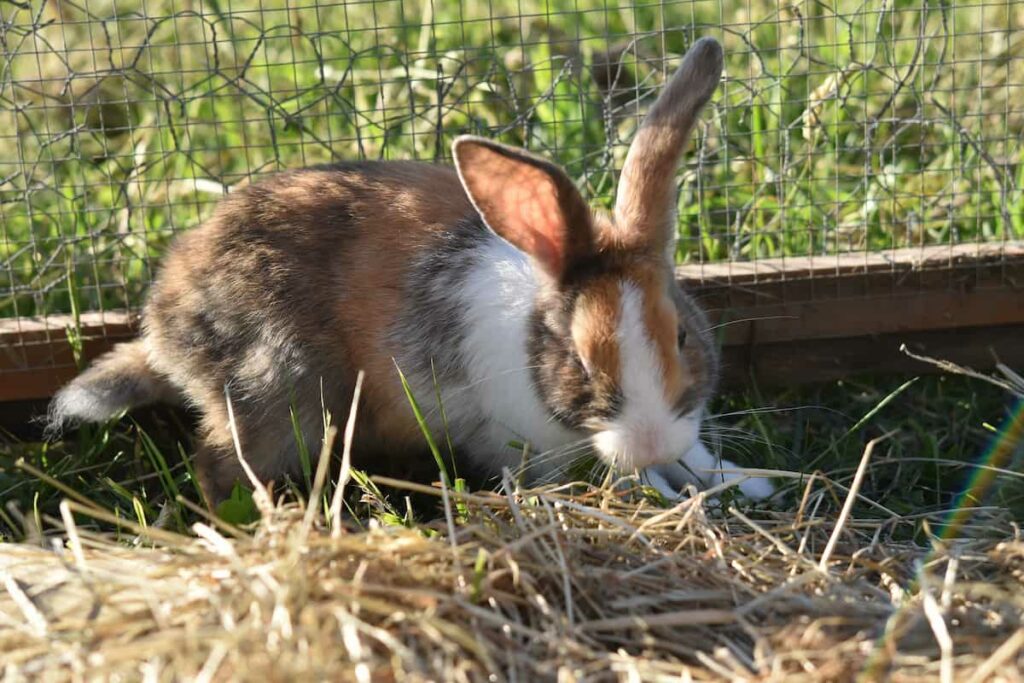
Rabbit farming methods used in the Philippines
There are two main types of rabbit farming in the Philippines: cage and free-range.
- Cage farming is more common because it is cheaper to operate. Cages typically have wire floors that allow rabbits to move around but restrict their movement. Rabbits in cages usually have access to food and water, but they cannot escape from the cages. Cage-free rabbit production is the most common type in the Philippines. This method lets rabbits run free in large enclosures with enough room to exercise and socialize. However, this method is less sustainable because it requires a lot of resources, such as land, to build these enclosures.
- Free-range farming is more expensive, but it allows for more freedom for the rabbits. Free-range farms typically have open pens that will enable rabbits to roam freely. They also have access to food and water, but they may not have access to predators or other animals. Free-range rabbit production is one option that is less resource intensive than cage-free production. However, free-range production can be more challenging to manage because producers need more attention to ensure the rabbits have enough access to food and water.
New technologies in rabbit farming in the Philippines
Several new rabbit farming technologies in the Philippines are making it more efficient and sustainable. These technologies include using wire mesh cages for breeding rabbits, feeding them a high-quality diet, and using artificial lighting to keep them active at night. Wire mesh cages have become popular in rabbit farming because they allow more rabbits to be housed in a smaller space, making it easier to manage their populations. The diet fed to rabbits is also important because it needs to be high in fiber and nutrients to support their growth and health.
Housing and feeding rabbits in the Philippines
If you’re thinking about raising rabbits in the Philippines, keep these things in mind:
- The climate is perfect for them – The country has a tropical climate with plenty of sunlight and rainfall year-round.
- Housing is critical – Provide enough housing for your rabbits so they can have a place to hide from predators and run around freely. They need at least two rooms—one for daytime activity and one for nighttime activity. Ensure the room is clean and debris-free so the rabbits can hop around comfortably.
- Feeding is essential, too – Provide enough food to prevent obesity but not so much that they get fat and lazy. A good diet includes hay, fresh vegetables, fruit, and pellets (a type of rabbit food). Generally, rabbits should be fed a diet consisting mostly of hay, fresh vegetables and fruits, and limited pellets.
Rabbits breeding in the Philippines
There are various ways to raise rabbits, but they all require basic preparations. One of the most popular methods is cage farming, in which rabbits are kept in cages. This is the most common way to raise rabbits for food, but there are other methods. Rabbits can also be raised outdoors, requiring more space and preparation. They can be raised on a small farm or in a large enclosure, but they need lots of hay, vegetables, and water. If you want to breed rabbits, you will also need a hutch and enough room for newborns and their mothers.
In case you missed it: Organic Rabbit Farming – Production, Raising Practices
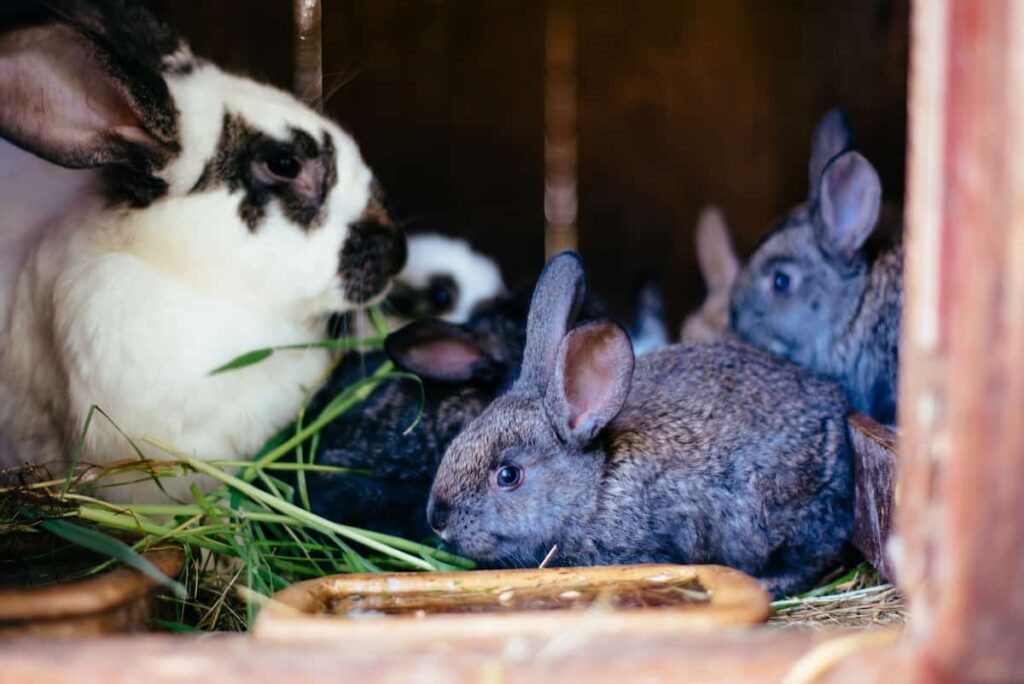
Steps to start rabbit farming in the Philippines
- Decide if you want to raise rabbits as pets or for food production. If you only want to keep them as pets, you will need to find a small home for them and provide necessities such as food and water. To raise rabbits for meat, you must purchase more specialized equipment and arrange for rabbit housing and feeding.
- Get started by researching the types of rabbits available in your area. Several rabbit breeds are available, so selecting the one best suited for your climate and maintenance needs is important.
- Get advice from a local farmer or rabbit expert about what fencing is necessary for your setup and choose an appropriate location for your rabbits’ home. Rabbit fencing should be at least 6 feet high with a bottom rail so the rabbits cannot escape; wire mesh and wooden boards are effective options.
Requirements for rabbit farming in the Philippines
The Philippines is ideal for rabbit farming because of its tropical climate, ample land, and feed availability. The country has over 100 million people, so there is plenty of demand for rabbit meat and pellet products. To start a rabbit farming business in the Philippines, you will need to obtain a license from the government. You can apply online or contact your local agricultural extension office. You will also need to purchase feed and housing for your rabbits and fencing or netting to keep them inside.
Good husbandry practices for Philippines rabbit farmers
If you are thinking of starting rabbit farming in the Philippines, there are some important points you need to keep in mind. First and foremost is good husbandry practices. These will ensure your rabbits have a healthy and productive life and that your production costs are minimized. Below are some tips on how to do it:
- Provide plenty of fresh hay and feed: Hay is a crucial component of a rabbit’s diet and should be provided enough to meet their daily needs. The feed should also be freshly prepared and given in small amounts several times daily.
- Keep the cages clean: Rabbits need to live in clean surroundings if they’re going to have a healthy body and mind. So, ensure their cages are washed regularly using warm water and soap and disinfected with bleach or Clorox whenever necessary.
- Socialize your rabbits: Socializing your rabbits helps them get along better with one another, which leads to improved health overall. Give them plenty of opportunities to play together by providing several large hutches. Choose a location for your farm that is warm, sunny, and has plenty of fresh air and space for the rabbits.
- Get started by acquiring the necessary fencing, feeder, and water containers for your rabbits. Make sure to purchase sized appropriately for the number of rabbits you plan on having.
Backyard rabbit farming in the Philippines
Backyard rabbit farming has become increasingly popular in the Philippines to provide food and income for rural families. The animals are easy to keep, have a short gestation period, and produce small but healthy litters of rabbits every two to three weeks. There are important things that you will need to start this type of farming: a space in your yard that is at least 12×12 feet, do not build your housing near any trees or water sources, fencing for the enclosure (at least six feet high), access to fresh water and hay, and food for the rabbits.
In case you missed it: Rabbit Fattening Food, Methods, Techniques
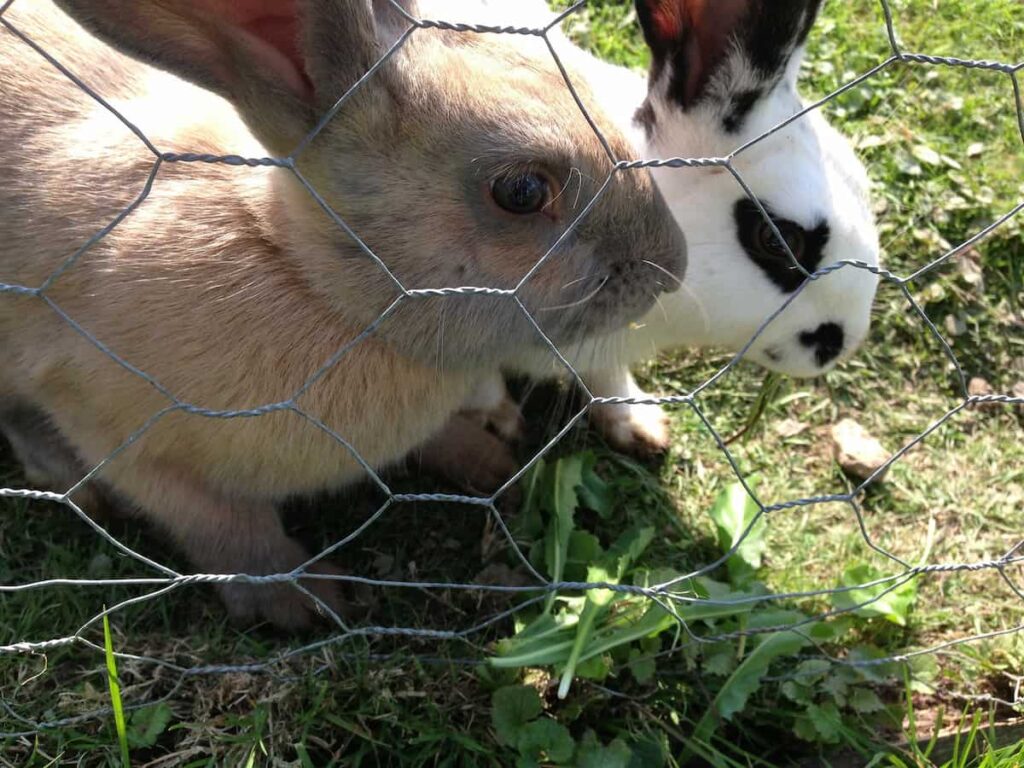
The basic procedure for raising rabbits is simple. Firstly, you will need to provide them with a secure enclosure where they can live undisturbed, feed them hay and fresh vegetables daily, and give them plenty of exercise opportunities.
Rabbit breeds in the Philippines
Dutch Whites, Californians, Sables, New Zealand Blacks, and Angoras are the most common rabbit breeds. Many rabbits are available in the Philippines, including Dutch bunnies, dwarf varieties, and Rex rabbits. These breeds are all popular for their different characteristics and suit other purposes in rabbit farming. For example, Dutch bunnies are good for meat production, while dwarf varieties are used for breeding. In addition, Rex rabbits are often raised for their fur, which can be sold commercially or used for clothing.
Rabbit farming areas in the Philippines
Rabbit farming areas in the Philippines are mainly concentrated in the north and central parts of the country. These provinces include Bukidnon, Camarines Norte, Iloilo, Cebu, Negros Oriental, Bohol, Pangasinan, Ilocos Sur, and Cagayan Valley. There are also small-scale rabbit farming operations in Metro Manila and Mindanao.
The main reason for the concentration of rabbit farming in these regions is a demand for them from local markets. In addition, rabbit meat is considered a delicacy in many parts of the Philippines and is, therefore, highly sought after. In addition, rabbits are easy to keep and manage, making them a good choice for small-scale farmers who want to get into this sector. There are several ways to produce rabbits in the Philippines.
The most common method is to raise rabbits intensively as part of a commercial farm. This involves feeding them high-quality food and providing them with specialized care so that they can produce high numbers of offspring. Another common way to produce rabbits is by setting up small-scale rabbit farms where the animals can graze on pasture land. This type of farming is more sustainable because it does not require expensive feed or treatment facilities.
In case you missed it: Rabbit Farming Business Plan, Cost, Profit Margin in India
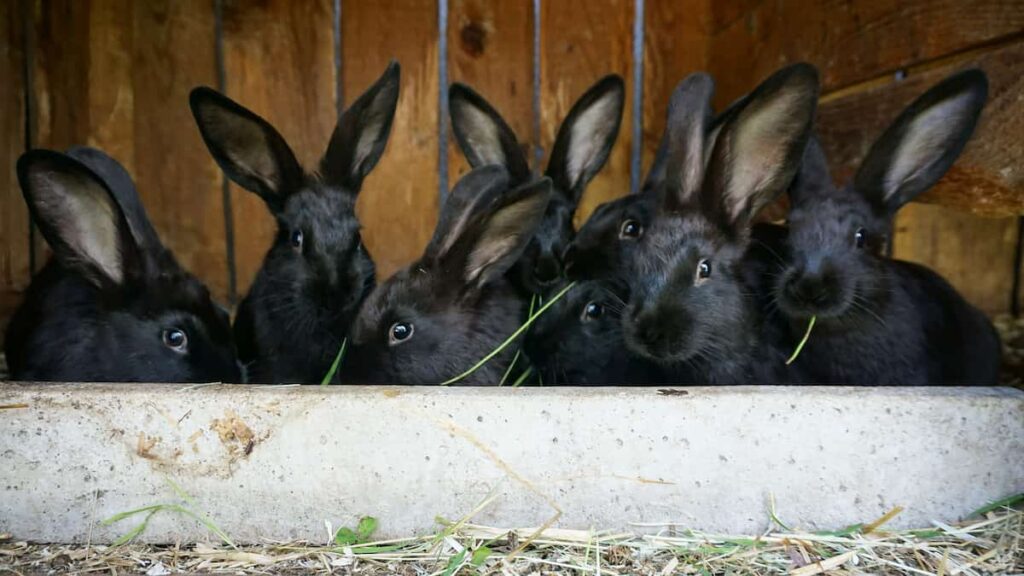
Tips on raising rabbits in the Philippines
- Rabbit farming is a good way to get started with raising rabbits in the Philippines. It is a low-maintenance, easy-to-manage, and profitable venture.
- Get started by spending time familiarizing yourself with the basics of rabbit breeding and nutrition. This will help you better provide for your rabbits and ensure they get the best possible care.
- Make sure you have enough space for your rabbits to run around and plenty of feed, water, and hay available.
- Be sure to keep an eye on your rabbits’ health and let us know if you notice any problems or changes so we can correct them promptly.
Rabbit farming problems in the Philippines
- To start a rabbit farm in the Philippines, you must obtain a license from the Department of Agriculture. Once you have your license, you will need to find an area supporting many rabbits. You will also need to purchase feed for your rabbits, cages, hutches, and other necessary equipment.
- Rabbits are considered agricultural pests in some parts of the world, but in the Philippines, they are seen as valuable animals that help to reduce poverty by providing food for people who can’t afford meat.
- The Philippines are currently one of the leading countries in rabbit farming. There are different reasons for this, but the main ones are the country’s warm climate and large population. However, there are also some problems with rabbit farming in the Philippines.
- One of the biggest problems is that rabbits, as a breed, don’t do well in tropical climates. They need many places to run and play and often get sick because of the hot weather and lack of fresh air. So, if you want to farm rabbits in the Philippines, you must keep them in a big enclosure.
Rabbit farming loans and subsidies in the Philippines
There are various types of rabbit farming loans and subsidies available in the Philippines. These can include private sector loans, department of agriculture (DA) loans, and agricultural credit program (ACP) loans. The private sector can provide short-term loans at low-interest rates to help farmers get started with rabbit farming. However, the DA offers long-term loans at lower interest rates and with better terms than the private sector.
ACP loans are also available from the government but have higher interest rates than the other loan options. Farmers who have successfully borrowed from a lender will need to pay back the money over time using their profits from the rabbits. Interest payments can add up quickly, so farmers must make wise financial decisions when borrowing money for rabbit farming.
Rabbit farming profit in the Philippines
Rabbits are hardy animals and will thrive in warm climates. However, they require some care to keep them healthy and profitable. Make sure to provide them with plenty of fresh water, hay, and a clean litter box. A rabbit farmer can stand to earn between P791. 62 to P1000, depending on whether the rabbits get 100% pellets or a mix of pellets and available forage (grass and other edible plants).
In case you missed it: Rabbit Diseases, Treatment, Rabbit Care
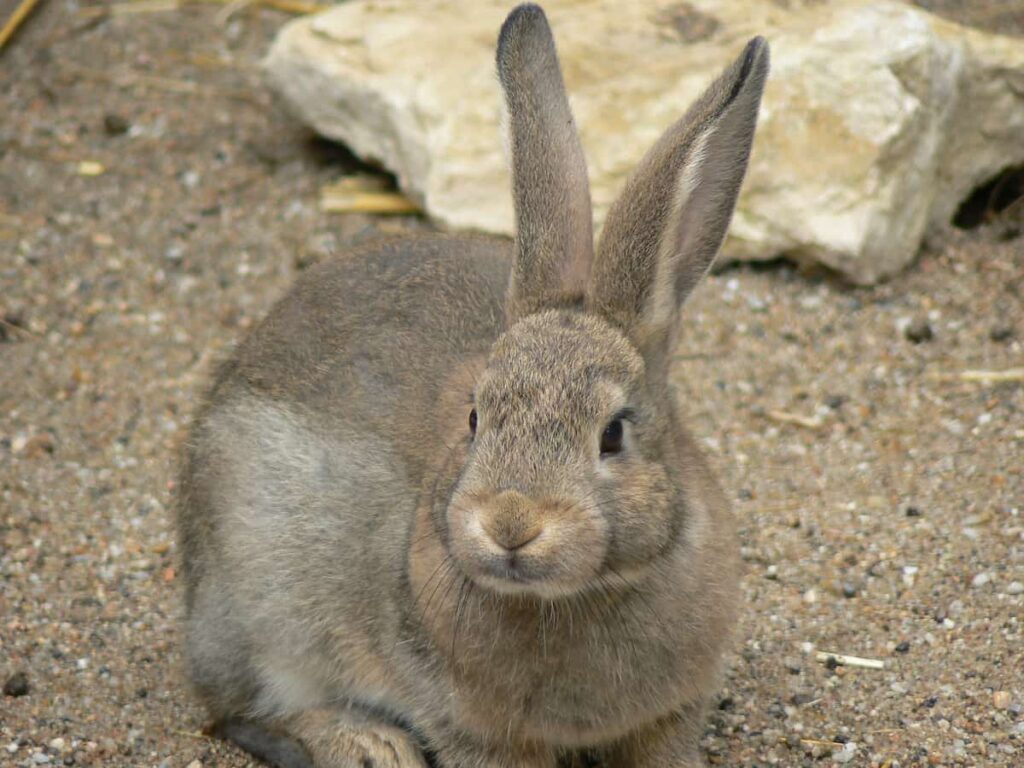
Rabbit farming challenges in the Philippines
- The Philippines is one of the top ten countries in rabbit production. Rabbit farming is a growing industry in the Philippines, and there are many challenges to be faced when starting this type of farming.
- One important factor to consider when raising rabbits is their housing conditions. The cages should be big enough, so the rabbits have plenty of space to move around but not so large that they can become destructive.
- Another challenge that rabbit farmers face is disease control. To produce healthy meat, rabbits must be free from diseases such as pneumonia and bronchitis. Keeping the surrounding place clean is important, so these diseases cannot spread easily. In addition, regularly cleaning the cages and feeding antibiotics to the rabbits will help prevent them from getting sick.
Conclusion
Rabbit farming in the Philippines is a relatively new and rapidly growing industry. The Philippines has a large population of rabbits. Rabbit farming is a popular and profitable industry in the Philippines. The country has a long history of raising rabbits for their meat, and fur. Today, rabbit farming is still one of the most common agricultural activities in the Philippines.
- Types of Pesticides Used in Agriculture: A Beginner’s Guide
- Economical Aquaculture: A Guide to Low-Budget Fish Farming
- 15 Common Planting Errors That Can Doom Your Fruit Trees
- How to Make Houseplants Bushy: Effective Tips and Ideas
- Innovative Strategies for Boosting Coconut Pollination and Yield
- Pollination Strategies for Maximum Pumpkin Yield
- The Complete Guide to Chicken Fattening: Strategies for Maximum Growth
- Natural Solutions for Tulip Problems: 100% Effective Remedies for Leaf and Bulb-Related Issues
- Revolutionizing Citrus Preservation: Towards a Healthier, Greener Future
- Natural Solutions for Peony Leaf and Flower Problems: 100% Effective Remedies
- Maximizing Profits with Avocado Contract Farming in India: A Comprehensive Guide
- Natural Solutions for Hydrangea Problems: 100% Effective Remedies for Leaf and Flowers
- The Ultimate Guide to Choosing the Perfect Foliage Friend: Bringing Life Indoors
- From Sunlight to Sustainability: 15 Ways to Use Solar Technology in Agriculture
- The Ultimate Guide to Dong Tao Chicken: Exploring from History to Raising
- The Eco-Friendly Makeover: How to Convert Your Unused Swimming Pool into a Fish Pond
- Mastering the Art of Delaware Chicken Farming: Essentials for Healthy Backyard Flocks
- 20 Best Homemade Fertilizers for Money Plant: DIY Recipes and Application Methods
- How to Craft a Comprehensive Free-Range Chicken Farming Business Plan
- Brighten Your Flock: Raising Easter Egger Chickens for Beauty and Bounty
- How to Optimize Your Poultry Egg Farm Business Plan with These Strategies
- Subsidy for Spirulina Cultivation: How Indian Government Schemes Encouraging Spirulina Farmers
- Ultimate Guide to Raising Dominique Chickens: Breeding, Feeding, Egg-Production, and Care
- Mastering the Art of Raising Jersey Giant Chickens: Care, Feeding, and More
- Ultimate Guide to Raising Legbar Chickens: Breeding, Farming Practices, Diet, Egg-Production
- How to Raise Welsummer Chickens: A Comprehensive Guide for Beginners
- How to Protect Indoor Plants in Winter: A Comprehensive Guide
- Ultimate Guide to Grow Bag Gardening: Tips, Tricks, and Planting Ideas for Urban Gardeners
- Guide to Lotus Cultivation: How to Propagate, Plant, Grow, Care, Cost, and Profit
- Agriculture Drone Subsidy Scheme: Government Kisan Subsidy, License, and How to Apply Online
- Ultimate Guide to Raising Araucana Chickens: Breed Profile, Farming Economics, Diet, and Care
- Bringing Hydroponics to Classroom: Importance, Benefits of Learning for School Students
- Ultimate Guide to Raising Polish Chickens: Breed Profile, Farming Economics, Diet, and Care
- Ultimate Guide to Raising Australorp Chickens: Profile, Farming Economics, Egg Production, Diet, and Care
- Silkie Chicken Farming: Raising Practices, Varieties, Egg Production, Diet, and Care
- Sussex Chicken Farming: Raising Practices, Varieties, Egg Production, Diet and Care